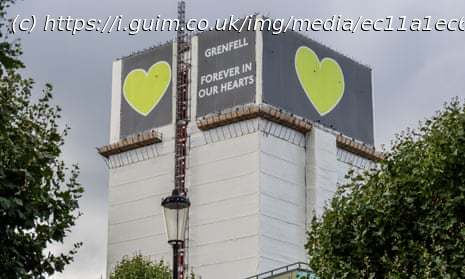Verdict of seven-year inquiry into disaster that killed 72 people apportions responsibility widely
The Grenfell Tower disaster was the result of “decades of failure” by central government to stop the spread of combustible cladding combined with the “systematic dishonesty” of multimillion-dollar companies whose products spread the fire that killed 72 people, a seven-year public inquiry has found.
In a 1,700-page report that apportions blame for the 2017 tragedy widely, Sir Martin Moore-Bick, the chair of the inquiry, found that three firms – Arconic, Kingspan and Celotex – “engaged in deliberate and sustained strategies to … mislead the market”.
He also found the architects Studio E, the builders Rydon and Harley Facades and the Royal Borough of Kensington and Chelsea’s building control department all bore responsibility for the blaze.
Studio E demonstrated “a cavalier attitude to the regulations affecting fire safety”. Its failure to recognise that the plastic-filled panels on the high-rise tower were dangerous was not the action of a “reasonably competent architect” and it “bears a very significant degree of responsibility for the disaster”, the inquiry found.
The inquiry was highly critical of the tenant management organisation (TMO), which was appointed by the local authority, the Royal Borough of Kensington and Chelsea (RBKC), to look after its thousands of homes but, according to the report, consistently ignored residents’ views. The TMO chief executive, Robert Black, established a “pattern of concealment … in relation to fire safety matters” and the TMO “treated the demands of managing fire safety as an inconvenience” in “a betrayal of its statutory obligations to its tenants”, the report said.
After 400 days of evidence in an inquiry that has cost the UK taxpayer more than £200m, Moore-Bick reserved some of his most damning conclusions for central government.
It regulates the safety of buildings but failed to tighten up ambiguous fire regulations while it was engaged in a “bonfire of red tape” launched by the Conservative prime minister David Cameron from 2010 to 2016 in an attempt to boost the economy after the global financial crisis.
The inquiry found that the government was “well aware” of the risks posed by highly flammable cladding “but failed to act on what it knew”.
Eric Pickles, Cameron’s housing secretary until 2015, had “enthusiastically supported” the prime minister’s drive to slash regulations and it dominated his department’s thinking to the extent that matters affecting fire safety and risk to life “were ignored, delayed or disregarded”, the inquiry concluded.
Pickles also failed to act on a coroner’s 2013 recommendation to tighten up fire safety regulations after a cladding fire at Lakanal House, another London council block, killed six people. It was “not treated with any sense of urgency”, the inquiry found and the tightening up had not happened by the time Grenfell went up in flames on 14 June 2017.
In cross-examination under oath, Pickles vehemently insisted the anti-red tape drive had not covered building regulations. But the inquiry said this evidence was “flatly contradicted by that of his officials and by the contemporaneous documents”.
The final report of the Grenfell Tower public inquiry comes seven years, two months and 21 days after the fire, which started behind a fridge in a fourth-floor flat. It raged through the combustible cladding system to the 24th floor in about 30 minutes.
Home
United States
USA — Criminal Grenfell report blames decades of government failure and ‘systematic dishonesty’ of companies






